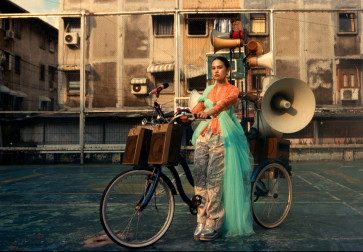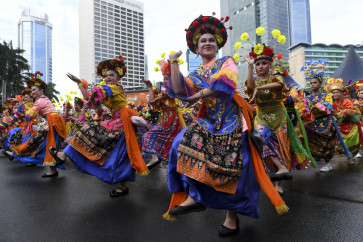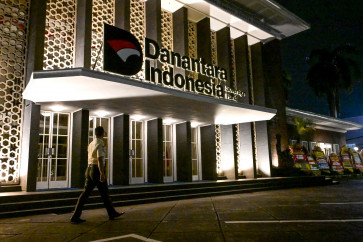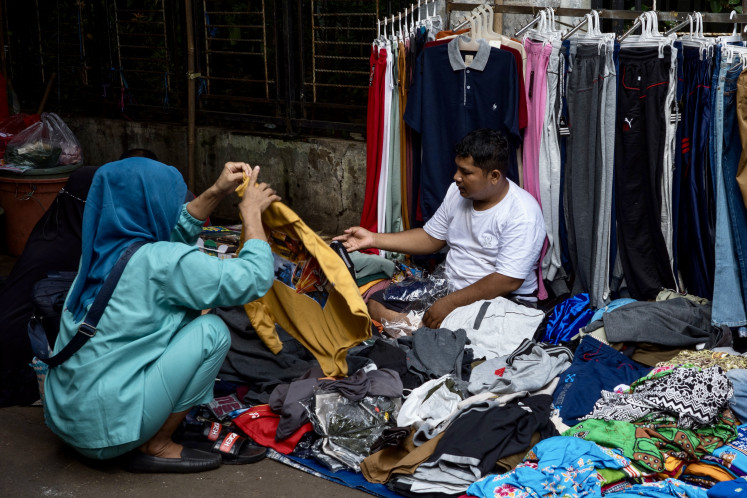Popular Reads
Top Results
Can't find what you're looking for?
View all search resultsPopular Reads
Top Results
Can't find what you're looking for?
View all search resultsIn Semarang, big plans for the 'house of a thousand doors'
Grand evening: The grandeur of the Lawang Sewu building in Semarang, Central Java, is clearly visible at night with enhanced lighting
Change text size
Gift Premium Articles
to Anyone
G
span class="caption" style="width: 510px;">Grand evening: The grandeur of the Lawang Sewu building in Semarang, Central Java, is clearly visible at night with enhanced lighting. (JP/Suherdjoko)
Lawang Sewu in Semarang, Central Java, has been under renovation for the past three years in the hopes of making the heritage building a tourist destination for domestic and foreign travelers.
State railway operator PT Kereta Api Indonesia (KAI), which owns the former railway terminal, wants to make Lawang Sewu a rival to the city's other attractions: Old Town, Chinatown, Sam Poo Kong Temple and the Grand Mosque of Central Java.
'We have renovated Building A and spent Rp 6 billion [US$616,650]. We are now renovating Building B with a budget of some Rp 3 billion,' PT KAI Operating Region IV vice president Heru Kuswanto told The Jakarta Post recently.
While lawang sewu means house of a thousand doors in Javanese, the building has considerably fewer doors than its moniker would have. However, numerous high and wide windows throughout the complex give the impression of even more portals.
Recently, more tourists have visited the building, which was unused for almost 20 years. In 2012, for example, over 63,000 tourists visited Lawang Sewu, an increase of 20 percent from the previous year, according to officials.
PT KAI started renovations of the building in 2010. A steam locomotive sits next to the building, which was finished in 1907, as a reminder that it was once the main office of the Dutch Indies Railway Company (NIS).
Lawang Sewu was also the site of a five-day fight in 1945 during the Japanese occupation of Indonesia, when members of the Railway Youth (AMKA) fought with the Kempetai, or Japanese secret police, and sailors from a Japanese navy carrier battle group.
The lives lost in the conflict, in addition to rumors of dungeons underneath the complex, gave rise to rumors that Lawang Sewu is haunted.
Following the nation's independence, Lawang Sewu served as headquarters for the Indonesian Railway Agency (DKARI), the predecessor of PT KAI.
The building was also once used as the office for the Diponegoro Military Command's Facilities Agency and the regional office of the Transportation Ministry.
In 1992, the Semarang municipal administration declared Lawang Sewu as one of 102 heritage or historic buildings deserving preservation in the city.
Heru said that the renovations were expensive and had to adhere to preservation guidelines. 'We are very strict in controlling the building use after renovation. If there is any party that may damage the building or spoil its beauty, we will remind them.'
PT KAI also wants a break from paying Rp 306 million in annual land and property taxes (PBB). 'We are asking for a tax reduction because this is Semarang's icon,' Heru said.
A previous mayor reduced the tax charges for the building by 60 percent.
The six buildings that comprise Lawang Sewu were designed by Dutch architects Jacob F. Klinkhamer from the then Technische Hogeschool Delft, now the Technische Universiteit Delft, and B.J. Ouendag in Amsterdam.
Lawang Sewu has high ceilings, two grand towers, stained glass ornaments, long halls, wide yards and finely arranged rooms. Circular staircases make the building even more attractive.
'Unfortunately there is no parking lot in the area. Visitors have difficulties in parking their cars,' local tourism observer Wahid said.
G. Sapto of the Semarang Municipal Tourism Agency, however, said that parking problems could be solved as the Diponegoro Military Command's Mandala Bhakti Museum, which is located across the Youth Statue that is outside Lawang Sewu, was willing to provide parking. 'The museum can provide parking spaces for visitors to both the museum and Lawang Sewu. PT KAI can just cooperate with the museum.'
Admission tickets to Lawang Sewu cost Rp 5,000 for students and Rp 10,000 for the general public.
Open from 9 a.m., the management allows visitors to stay as late as 9 p.m. for the chance to see ghosts.
Meanwhile, those of stout heart may be interested in the tour of the area under Lawang Sewu: Visitors are given flashlights and high rubber boots to walk through the narrow, pitch-black catacombs knee-deep in water.










